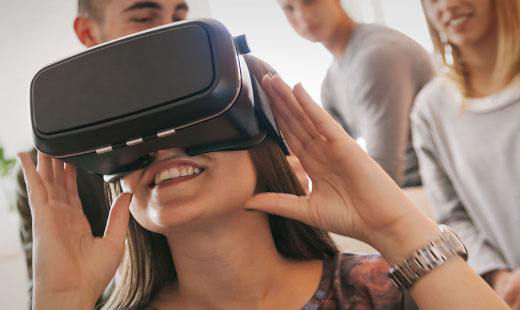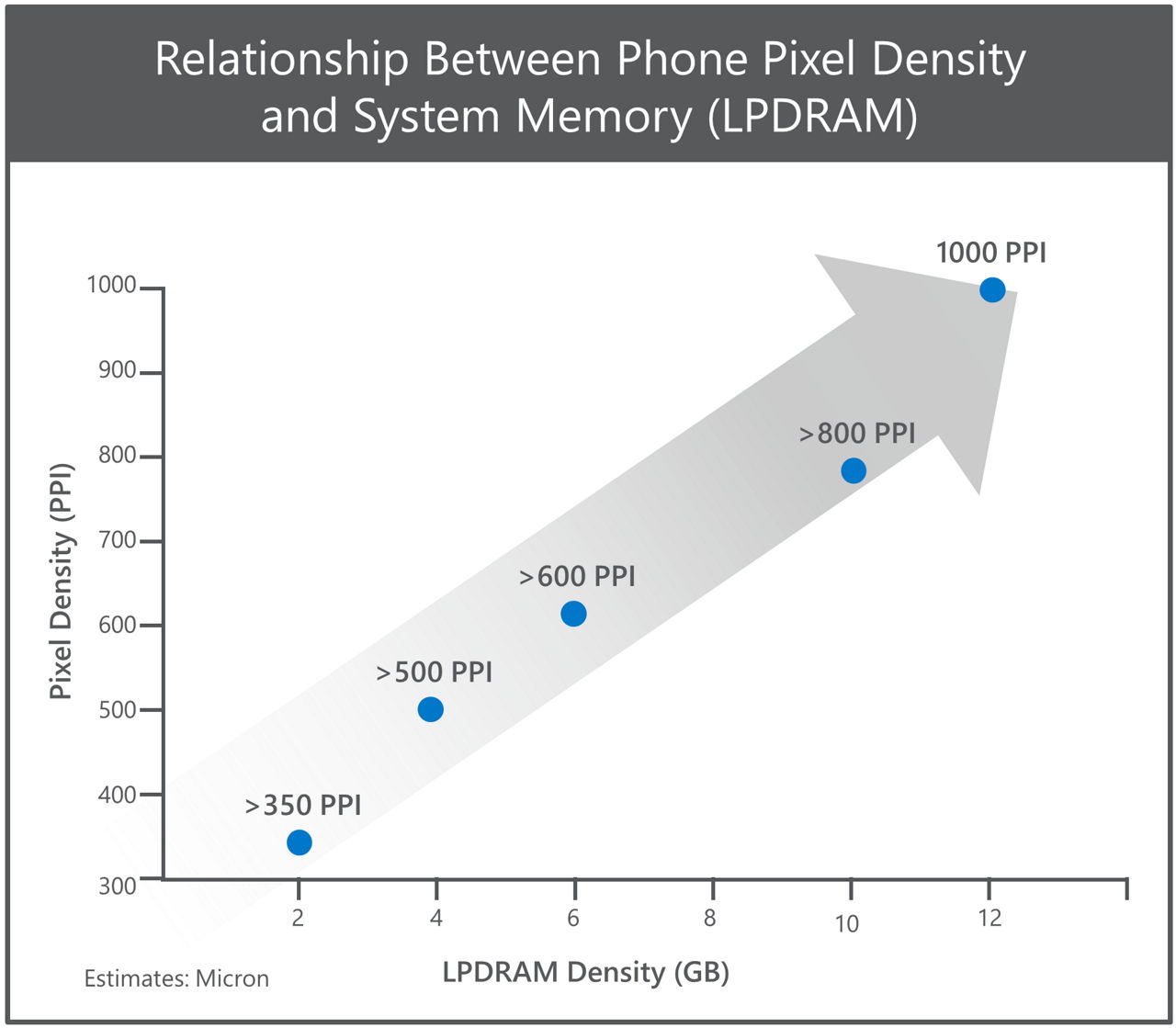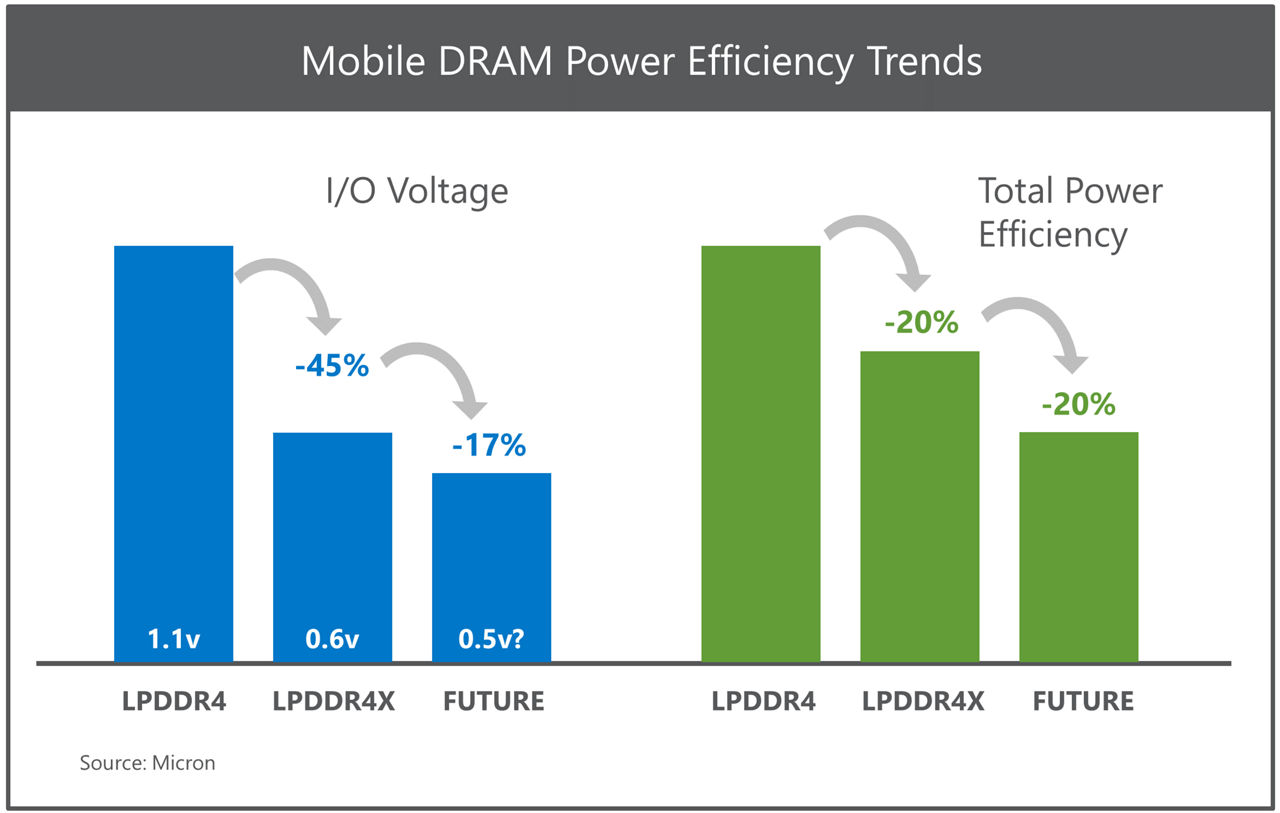Last year, I co-authored the following article (with my Micron colleague Amy Chou), which appeared in the Mobile World Congress 2017 program and was later published as a blog here on our website. Check it out for insights into the VR requirements that are driving innovations across the entire mobile ecosystem.
Also — check back after Mobile World Congress 2018 to find a new blog highlighting how memory and storage are feeding the growing needs of AI engines in smartphones: Artificial Intelligence in Your Smartphone? You'll Need Faster Storage.

The rise of virtual reality and higher-resolution displays are just two innovations driving — and stretching — the mobile industry. In an effort to create truly immersive mobile VR, there needs to be a perfect balance of high resolution and high refresh rates. Adding a faster, pixel-rich display is an obvious next step, but it will require more power-hungry components to drive it. The mobile ecosystem must come together to solve the problem of battery life so that mobile VR can reach its true potential.
The breadth of announcements and activity around virtual reality (VR) continues to accelerate. Last year’s CES and Mobile World Congress events highlighted the significant progress being made in both VR hardware and software. While it seems that everyone is jumping on the VR bandwagon, the quality of the VR can vary widely, depending on the level of hardware or type of content.
High-end VR solutions such as Oculus Rift or HTC Vive certainly have the best potential for a high-quality experience because of their ability to deliver high performance hardware, but we believe that most consumers will actually experience VR for the first time on a mobile platform because of lower cost and easier accessibility. To capitalize on this trend, hardware and software developers are focusing on improving several aspects of the mobile VR experience, including HMD headsets, mobile VR controllers, mobile applications, and of course, the VR content itself.
Getting to True Immersive Mobile VR
In order to create truly immersive mobile VR — where it’s tricking the user’s mind to believe they are somewhere other than where they actually are — there needs to be a perfectly mixed balance of several ingredients: high resolution, high pixel fill density, high framerate, and high screen refresh rate. Simply put, today’s smartphone displays don’t have enough resolution nor fast enough refresh rates needed to provide great VR.
One of the biggest challenges facing VR is overcoming the “screen door effect” (SDE), where the viewer can actually see the fine lines separating the pixels. This problem occurs because VR headsets use lenses to magnify the screen’s pixels across a much wider field of view.
The Need for More Pixels and Faster Frame Rates
Adding more pixels is the first step to solving the SDE problem. Most of today’s flagship VR-enabled smartphones (those with built-in specs, sensors and apps that work with VR headsets) max out at 500-600 pixels-per-inch (PPI). Cramming more pixels into every inch can solve the immersion-breaking effect and also provide a higher quality image, due to the fact that VR applications split the number of pixels in half to accommodate each individual eye.
Display manufacturers clearly understand the future potential of VR and the need for higher resolutions. Japan screen manufacturer Japan Display, a joint venture between Sony, Toshiba and Hitachi, recently announced plans for a VR-focused smartphone display with an impressive 800PPI. Similarly, Sharp has already demonstrated a 1000PPI IGZO display, a positive step in the direction for higher pixel density for mobile VR platforms.
However, a higher pixel count display alone is not enough. Displays with faster refresh rates, low latency and low persistency directly contribute to a viewer’s experience, such as helping eliminate simulation sickness, while stimulating a feeling of total immersion. While a 60Hz refresh rate is today’s VR display minimum requirement, it’s 90Hz and beyond that is needed to truly deliver a smooth VR experience.

Enabling Higher-Resolution Smartphones
Since each individual pixel stores unique information such as dynamic range and color depth, adding more pixels and higher refresh rates increases the phone’s memory requirements. Without sufficient system memory, a high-resolution phone’s display will not perform at an acceptable frame rate.
Until as recently as 2015, flagship and high-end smartphones had just 2GB of system Low Power DRAM (LPDRAM). Now, as display resolutions increase, 4GB of LPDRAM is the new norm, with several models using 6GB and 8GB. Aside from supporting more pixels, the more RAM a device has, the better performance buffer it creates so that it can accommodate other emerging VR features, such as new sensors, more robust GPUs, and bigger image sensors.
Ideally, future VR-enabled smartphones would deploy a 1000PPI screen with a 90Hz refresh rate. A 1000PPI screen would offer viewers a true VR experience per eye (3,840 x 2160 resolution), resulting in a noticeably sharper image than current mobile VR displays offer. By our estimates, introducing a 1000PPI display in smartphones will require ~12GB of LPDRAM, which will necessitate new memory packaging innovations that integrate multiple high-capacity memory die together. Additionally, introducing ultra-high PPI in smartphones accentuates the forever challenge of power management.

Lowering Power Consumption in Smartphones
Among all of a mobile phone’s components, the CPU/GPU, display and memory consume the most power. Therefore, by adding more pixel-rich displays and more memory to support them, battery life becomes a major concern for manufacturers.
All of the mobile ecosystem players will need to work together to find efficient solutions for reducing power. Display makers are finding innovative ways to solve this problem, including development of pixels with less current leakage. For memory components, the latest LPDRAM specification, called LPDDR4x, reduces supply voltage from 1.1V to 0.6V, saving up to 20% of overall memory power compared to traditional LPDDR4. Micron’s version of LPPDR4X includes an additional power saving feature, error-correcting code (ECC), which automatically corrects single-bit errors which results in decreased standby and refresh power.
Saving 20% in power consumption may not sound like a lot, but if every component vendor contributed a similar savings, battery life would benefit in a big way. If the ecosystem makes that happen, we might actually be able to increase battery life while simultaneously accelerating capabilities and performance.
Moving Forward
Virtual reality remains a hotbed of innovation and excitement. In order to take full advantage of this trend, the mobile platform must deliver a standout VR experience. Of course, there is still a lot of industry work to do to make mobile VR truly great. In our quest to deliver amazing capabilities, we must not ignore the importance of critical elements like battery life. It’s imperative that the mobile industry comes together to enabled the expected VR experience.
Connect with us on Twitter @MicronTech and LinkedIn or leave a comment below.
Also see:
Mobile Memory Solutions